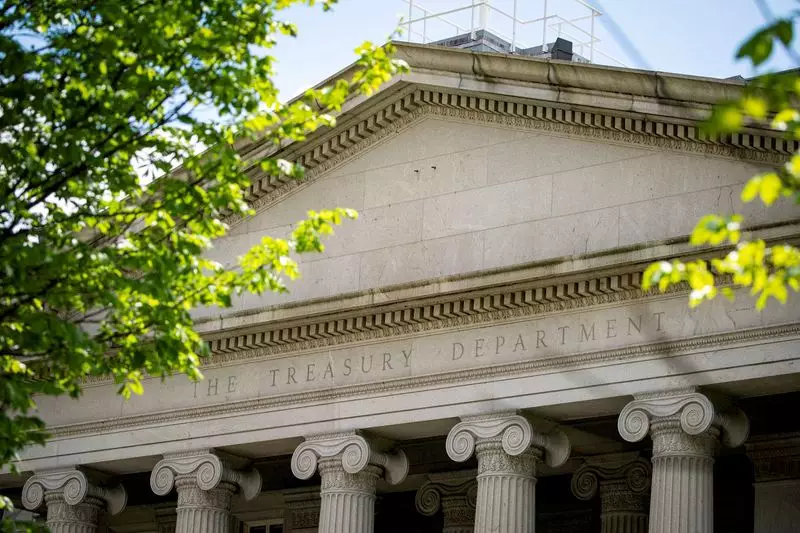The upcoming U.S. presidential election is causing significant recalibrations in how bond investors view the future trajectory of yields in the market. After President Joe Biden’s underwhelming performance in the first debate against his Republican rival Donald Trump, yields saw a sharp rise, indicating speculation about a potential second Trump win on November 5th. This sudden increase in yields to about 4.34% after the debate highlights a shift in investor sentiment towards the election outcomes.
Some investors are banking on higher inflation under a potential Trump administration due to his trade and economic policies such as increased tariffs on imports. The belief is that these policies, coupled with profligate government spending and reduced tax revenues, could lead to larger fiscal deficits and higher U.S. debt levels. However, Trump’s team argues that his pro-growth policies would actually bring down interest rates and decrease deficits, painting a conflicting picture for bond investors.
Despite the debate around Trump’s policies, there is a growing fear among investors about the sustainability of U.S. debt levels in the long run. The focus is now shifting towards the fiscal and debt dynamics of the country, with reasonable apprehensions about the impact of widening fiscal deficits on the market. This concern is likely to put a cap on any potential bond rally, especially with the Federal Reserve considering rate cuts to curb inflation.
The current market sentiment suggests a higher probability of a Trump re-election, leading to a reduced faith in lower yields moving forward. The anticipated continuation of rising yields has left bond bulls uncertain about the outlook for longer-dated Treasuries. While shorter-dated Treasuries might still rally in response to rate cuts, the uncertainty around inflation and economic growth makes the future of longer-dated debt more ambiguous.
Investors who had initially bet on normalizing interest rates early in the year are now facing shifting market dynamics, with the Fed delaying rate cuts. This unexpected turn of events has tested the patience of investors, especially those who had positioned themselves for significant policy easing. The year-to-date total returns for Treasuries are still in negative territory despite the decline in yields, indicating the challenging nature of the current market environment.
Despite the uncertainties surrounding the election and market dynamics, many investors remain optimistic about the bond market. The attractiveness of yields in an environment of higher rates is a positive factor for bond investments. Regardless of the election outcome, investors see potential in bond appreciation in the coming months, especially if yields continue to move lower. The recent decline in yields following weak jobs data further underscores the potential for bond market growth.
The U.S. presidential election has brought about significant changes in bond market dynamics, with investors closely monitoring the impact of potential outcomes on yields. The uncertainty around Trump’s policies, concerns about fiscal deficits, and changing investment landscape are key factors shaping the current bond market environment. Despite the challenges and risks, investors are hopeful about the future potential for bond appreciation and growth, emphasizing the importance of closely following market trends and adjusting investment strategies accordingly.


Leave a Reply